Photographs: Reuters
Delhi's refusal to beat its chest is part of its recent pragmatic approach to foreign and security affairs, says Jyoti Malhotra
India did not formally inform China about the launch of its intermediate-range ballistic missile Agni-5 from the Odisha coast, although it did notify all the other big powers about the event. According to government officials, who spoke on condition of anonymity, China was the only permanent member of the United Nations Security Council that Delhi did not speak to about the launch.
In fact, in the wake of the highly successful test that makes India the only developing country on a par with other missile powers like the United States, China, Russia and France, and brings most of China under its radar, the ministry of external affairs continues to deliberately downplay the event. The Agni 5 launch finds no mention at all on its website.
The officials pointed out that a general notice to marine traffic had been issued and certainly with the Indian media widely talking about it, "there was nothing secret about the launch of the Agni 5."
Delhi's refusal to beat its chest is part of its recent pragmatic approach to foreign and security affairs, borrowed from the Deng Xiaoping school of thought -- that it should keep its head down while pursuing a goal of making India a country to be reckoned with, which includes the maintenance of high economic growth.
Click on NEXT for more...
'We are not here to poke each other in the eye'
Image: Children play next to a rocket launcher on the decommissioned former Soviet aircraft carrier Kiev at Bagua beach, on the outskirts of northern China's TianjinPhotographs: Jason Lee/Reuters
According to Srikanth Kondapalli, professor of Chinese studies at the Jawaharlal Nehru University in Delhi, "Even if you have hundreds of Agni 5 missiles, the fact is that a nuclear weapon is a political weapon, it is a deterrent, it is never going to be used. However, the successful launch of the missile demonstrates to the Chinese that if you cross the red lines, India will have to think twice."
That is why, government officials said, Delhi would continue to engage with the Chinese government as if it were business as usual. "The Chinese respect strength. We are not here to poke each other in the eye, but to continue to engage as equals," one official said.
The officials, who said they were happy that missile man and Defence Research and Development Organisation chief V K Saraswat had been much more restrained in his reactions this time, noted he had said the Agni 5 needed a couple of more validation tests.
Over the next three months, Indian and Chinese officials and experts will meet on three occasions to talk about diverse issues, from a conversation on trans-border rivers and consular matters, as well as a maritime dialogue in which everything from deep sea mining to keeping the Indian Ocean lanes secure and free for trade traffic will be included.
Click on NEXT for more...
Delhi has decided to ramp up its engagement with US
Image: Visitors to the China Aviation Museum located on the outskirts of Beijing walk under old missiles on displayPhotographs: David Gray/Reuters
The decision to keep the Chinese engaged flows from the highest echelons, from none other than National Security Adviser Shivshanker Menon, former foreign secretary and China hand. At the same time, Delhi has decided to ramp up its engagement with the US and Japan, both powers keenly interested in the rise of the East Asian power.
Only a few days ago, US point-person on China Kurt Campbell concluded a dialogue on East Asia with his Indian counterpart in the ministry of external affairs Gautam Bambawale. Both sides discussed a range of issues from Myanmar to the failed North Korean missile test to the transition of power in Beijing this year.
The US, of course, describes its interest in Asia as a "strategic pivot," while India, much more reticent, prefers the 'Look East' umbrella designation.
Besides the East Asia dialogue, now in its fifth round and having lasted more than two years, and in which officials from the ministry of defence, as well as the National Security Council Secretariat participate, the deepening India-US engagement can be seen in the upcoming trialogue with Japan, slated for next week in Tokyo.
Click on NEXT for more...
'Fire from the Sky'
Image: A row of old anti-aircraft guns on display outside BeijingPhotographs: David Gray/Reuters
No wonder US State Department spokesperson Mark Toner said he wasn't surprised by India's Agni 5 test launch, admitting the US had known beforehand. India has a solid non-proliferation record, Toner added, and engages with the international community on non-proliferation issues, in what amounted to a thinly-veiled endorsement of India's missile test.
Russia's Pravda newspaper, once the official organ of the state but now privately owned, noted that India was now 'capable of striking Beijing and Shanghai,' while Germany's Deutsche Welle news-site described the Indian military as making "strategic strides."
The international reaction was in sharp contrast to the angry positions taken by some of the Chinese media, notably the Global Times, widely stated to reflect the more nationalist as well as righteous positions mostly articulated in China's powerful People's Liberation Army.
A cartoon in the Global Times, illustrated by Liu Rui and called 'Fire from the Sky,' probably best captures this nationalist mood. The cartoon depicts a missile with the Indian flag on it that has crash-landed on an ocean bed, while a startled mermaid is busy protecting sundry whales and other ocean life.
Click on NEXT for more...
'We are not rivals'
Image: Agni 4 missile is seen during the Republic Day paradePhotographs: B Mathur/Reuters
Kondapalli noted that the official Chinese reaction to India's missile test was fully restrained and mature (both countries are "emerging powers, we are not rivals, we are cooperative partners," said spokesman Liu Weimin) and described the contradiction as the "turbulence of a rising country."
At a time of shifting power equations in Beijing, the Communist Party of China's general secretary-designate Xi Jinping, as well as outgoing general secretary Hu Jintao, will be the only two civilians in China's all-powerful Central Military Commission, Kondapalli said, pointing out that China's generals will continue to dominate a section of the rhetoric for some time to come.
The PLA is believed to have its own ballistic missile programme and is said to have considerably aided both Pakistan and North Korea in the creation of their own missile programmes. That is why the failure of the recent North Korean missile launch is "so interesting," the anonymous Indian officials said.
Click on NEXT for more...
'China and India are sensitive toward each other'
Image: Soldiers roll out the Agni missile during rehearsal for the Republic Day paradePhotographs: Reuters
But they also admitted that India should look carefully at the patronising tone adopted by newspapers such as the Global Times, instead of dismissing them out of hand.
In a widely-quoted article called 'India being swept up by missile delusion,' the newspaper said, "China understands the Indian desire to catch up with China. China, as the most appropriate strategic target for India, is willing to take India as a peaceful competitor".
It added, "Due to historical reasons, China and India are sensitive toward each other. But objectively speaking, China does not spend much time guarding against India, while India focuses a lot of attention on China. China hopes India will remain calm, as this would be beneficial to both giants."
Click on NEXT for more...

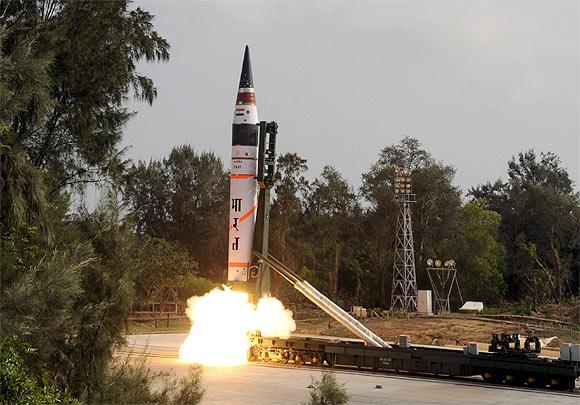
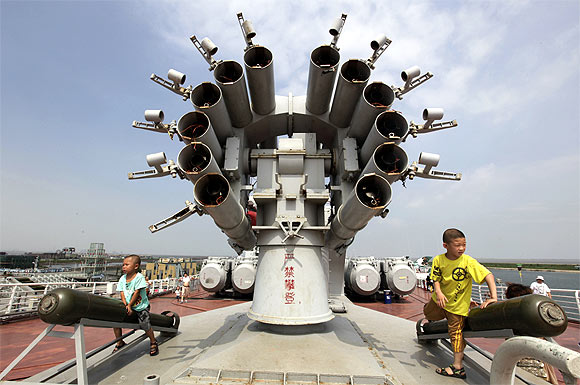
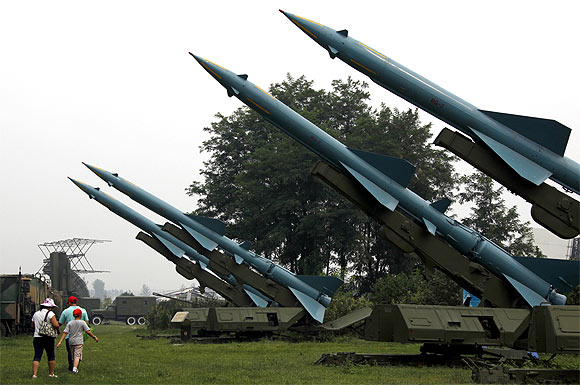

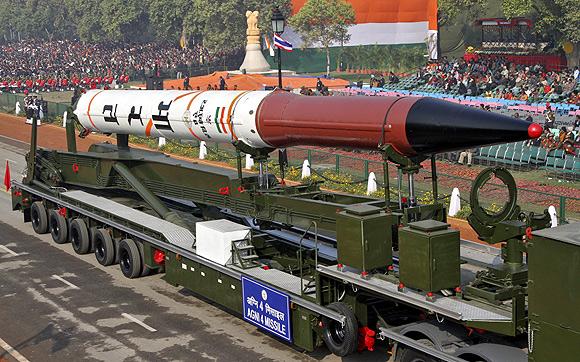
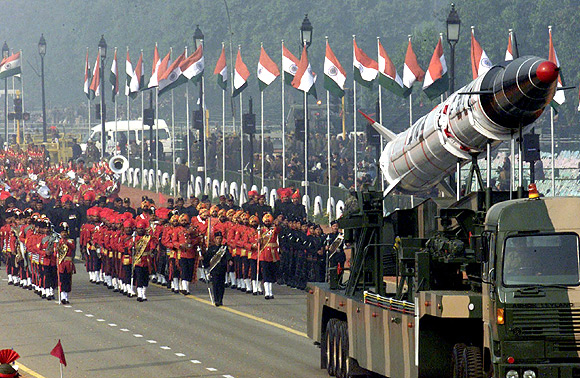

article